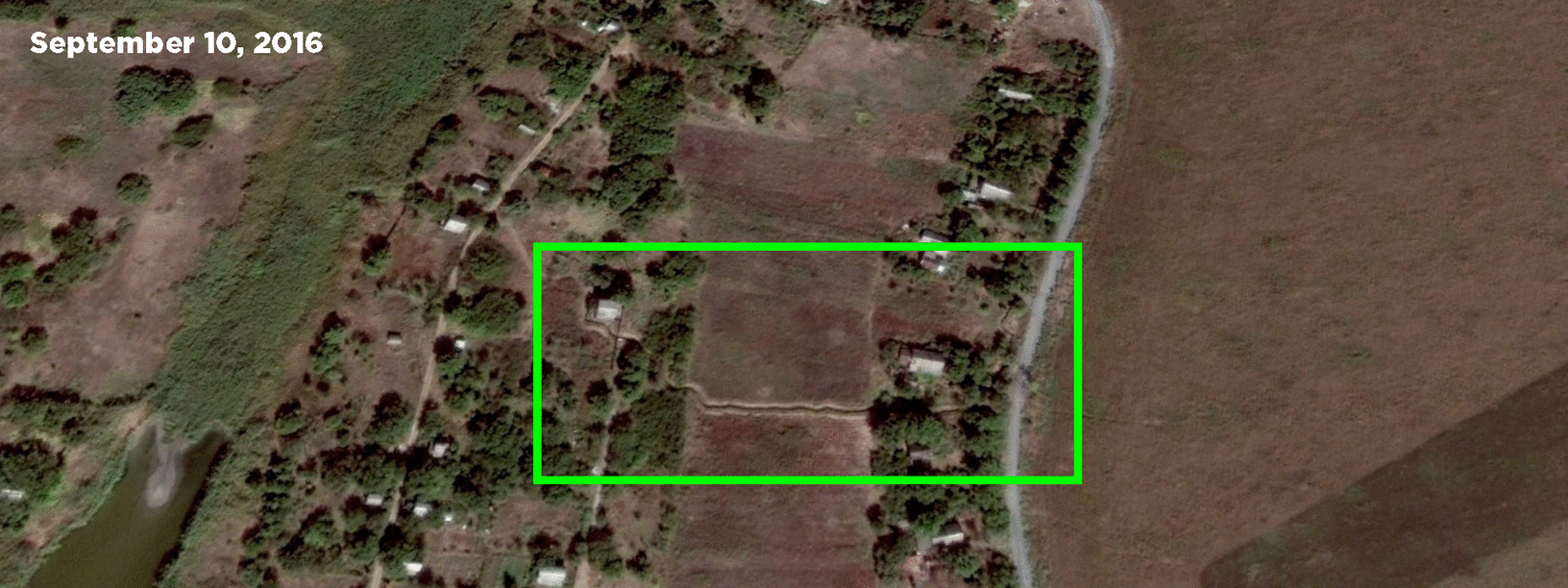UPDATE: Ceasefire Shelling in Civilian Centers
Analyzing newly released information relating to Minsk violations
UPDATE: Ceasefire Shelling in Civilian Centers

Analyzing newly released information relating to Minsk violations

As @DFRLab reported last week, ceasefire violations in several towns along the line of contact resulted in extensive damage in civilian areas. Damage is a result of military positions being embedded in or nearby civilian centers, consequently endangering critical infrastructure and causing civilian casualties. New information released during the Organization for Security and Co-operation in Europe’s Special Monitoring Mission (OSCE SMM) to Ukraine’s October 13 media briefing outlined newly observed Minsk violations including the presence of anti-tank mines and damage to residential buildings in the non-government-controlled town of Pikuzy (formerly Kominternove), Donetsk Oblast.
Principal Deputy Chief Monitor Alexander Hug stated that the OSCE SMM observed thirteen TM-62 anti-tank mines in non-government-controlled Pikuzy and eleven of the same weapon 1.5km west on the same road near government-controlled Vodiane, which are in violation of the Minsk agreements, on October 11. Mines are frequently observed in the area.
Imagery from an OSCE SMM mid-range UAV provided a detailed example of the problems faced throughout the line of contact in eastern Ukraine. Roads are covered in prohibited mines, endangering civilians and restricting the OSCE SMM’s monitors on the ground.



The SMM reported that on October 11, a mid-range UAV observed:
Two newly dug extensions of trenches near government-controlled Vodiane (19km north-east of Mariupol). The first segment, located about 150m south-east of Vodiane, had been extended by about 20m east (compared to previous observations in July 2017). The second one, located about 700m east of Vodiane, had been newly built and it extended 200m west. The distance between the two segments is about 400m.
While more recent satellite imagery is needed to see how these positions have grown, available imagery is useful to see the close proximity of these positions to civilian areas.


The SMM’s imagery provides a window into a particularly tenuous area on the line of contact where opposing Ukrainian Armed Forces and Russian-led separatist forces clash. Notably, rows of anti-tank mines laid by the so-called Donetsk People’s Republic (DNR) are adjacent to previously observed military positions.

SMM mid-range UAV imagery also confirmed the location of a military position (trench) previously reported by @DFRLab and a checkpoint on the west end of the town. Additional mini and mid-range UAV imagery from August reveals the civilian impact of this military position, detailing the before and after results of civilian residences caught in crossfire.

As the SMM previously reported, residents of Pikuzy delivered a letter addressed to the OSCE SMM, United Nations, and International Committee of the Red Cross (ICRC) outlining the difficulties faced by civilians in the town, including access to critical infrastructure. The SMM report stated:
Pikuzy residents said that the village would be safer if “DPR” armed men were not in Pikuzy; the SMM observed two armed men in the village.
While making these crucial observations, unarmed civilian OSCE SMM monitors continued to face unprecedented safety and security threats, with small arms fire being fired near the monitors. @DFRLab will continue to monitor open sources to give windows into the humanitarian situation on the line of contact in eastern Ukraine.
Follow the latest Minsk II violations via the @DFRLab’s #MinskMonitor.
Also, follow @DFRLab on Twitter for more in-depth analysis from our #DigitalSherlocks.

